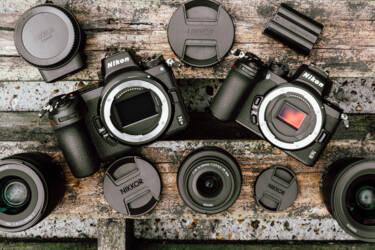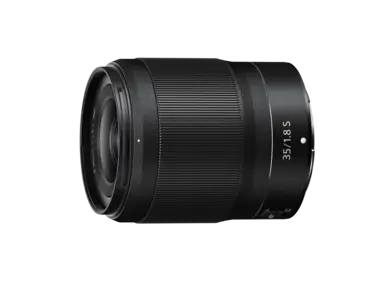How to style, compose and light a flat lay photograph

Street photographer Kiran Cox explores the visual storytelling genre of flat lay photography with his Nikon Z Series setup
Flat lay photography shares a personal story through objects. It is known for gaining high interactions with viewers on social media and is used by many, from bloggers and chefs to graphic desigers and of course photographers!
A few years ago, it used to be my go-to style when I worked as an in-house product photographer and designer for an independent gift company. I always loved when a new range of products would arrive and I had the opportunity to grab some different backgrounds to experiment with, whether it was using different coloured sheets of card or being able to box everything up and head out to find a location. I think coming from a street and documentary photography background is why I enjoyed this the most; being able to explore and hunt down the perfect texture and light always made the result more rewarding.
Composition
Composition is an essential part of any flat lay photograph. It is the composition that will draw the viewer’s eye into the photo, and it is up to you to bring them into the main focal point. This would be your main product/item, most often known as the hero piece. As a good starting point, placing the hero piece in the centre of your frame is an easy way to start building your scene. From here, you can start to add or remove items to see what works best. Remember to take a step back every so often to get a full view of how your layout is coming together.
There are a few different styles of composition you can play with to do this. The most common two are structured layouts, where each item is meticulously placed around your hero piece and a more random looking layout where you can place things at different angles and also have some of your pieces partially cropped out of the frame.
Follow the steps below and you will be well on your way to creating some amazing shots.
Kiran Cox

How to compose your shot:
- Ensure your hero piece is in the centre and commands the most attention from the viewer.
- Try not to use larger items in the corners of your shot.
- Keep an eye on the distancing between each piece. Keeping things equally spread always works well.
- Negative space can be very distracting, so keep an eye out for this, especially in the corners of your frame.
- Try to focus on the main parts of your hero piece e.g. with the Nikon Z 7 you might want to show the layout of the buttons at the top.
- Try some slightly different angles, adding a very slight tilt can add a lot more depth and dimension to a photograph without taking too much away from the birds-eye view.
- Use items that have different heights. This is a great way to make certain items stand out and make good use of any negative space.

Lighting
In most flat lay photography, you will see an even light spread across the image to avoid long and harsh shadows that might cover some of the items in the scene, and in some cases become a distraction from the main focal point. There are a few ways you can light your photo; natural light (if you are shooting outside, a cloudy sky will give you great even light with hardly any shadows), artificial light such as neon lights from a sign, continuous lighting or a speedlight.
However, in some cases introducing some direct light can help add depth and personality to your photo, if it does not overexpose any of the items you have laid out.
How to use lighting in your photo:
- Try to create an even light across your photo to make sure everything is exposed correctly and equally.
- Be mindful of harsh shadows as they may cover some of your items.
- When photographing items that are reflective, you can often get bright spots that could cover key details you are trying to capture.
- Keep an eye on your white balance. This is especially important if shooting under things such as blue skies, tungsten bulbs and fluorescent tubes.

Shoot flat lay like a pro
Watch Kiran as he styles and composes a flat lay
Balance, colour and tones
This is where you can start to bring out the personality of the photograph and make it unique to your aesthetic. There are a few ways you can go about doing this. Here are a few examples of things you can try:
- Try using a colour that contrasts with the products to help them stand out more, equally using the same colour can be just as visually appealing to the eye.
- Use different textured backgrounds — these always work extremely well e.g. bricks, wooden textures, and concrete.
- If you are using textures, keep them minimal so they do not take away from the items you are showcasing.

Telling a story
I mainly shoot street and documentary photography, and with this genre I am constantly trying to tell a story — either through a single image or from a group of photographs. I wanted to bring this into flat lay photography. Here are a few ways in which you can do this:
- Introduce some personal items into your photograph — such as a pair of sunglasses, a plant or a baseball cap. Just be careful that they do not detract from your hero piece.
- Background and textures always add depth and personality to a shot. If you are using the photos for a blog or Instagram feed, search for textures that match your style and bring out your personality.
- If you are shooting product, try to demonstrate some of its features. One example would be shooting the Z 6 with the tilt screen extended out.
- Bring in other elements such as water. Adding a light mist to your products or background can further help visually tell the story behind the photograph (such as demonstrating the weather sealing capabilities of the Z Series range).
- Postproduction editing. Every photographer edits their photographs in a unique way. Use this to add flavour to your photos.

Настройки
Сега идва техническата част от снимането на обекти, разположени на равна повърхност. По отношение на настройките на вашия фотоапарат имаме скоростта на затвора, диафрагмата, ISO и фокусното разстояние, с което снимате. Ето кратка разбивка на някои настройки, които бих препоръчал за снимане на обекти, разположени на равна повърхност.
Скорост на затвора
Начинът, по който задавате скоростта на затвора, зависи от начина, по който снимате. Ако снимате от ръка, искате да сте сигурни, че е настроен на достатъчно висока скорост, за да избегнете заклащането на фотоапарата. Добър начин да прецените каква скорост на затвора ще избегне улавянето на движение е да удвоите скоростта на фокусното разстояние, с което снимате. Например, ако използвате 50 мм обектив, се уверете, че скоростта на затвора не е по-бавна от 1/100 от секундата.
Диафрагма
Диафрагмата, която избирате за снимане, наистина зависи от това каква дълбочина на рязкост искате да има вашата снимка. Обикновено е добре да снимате с f5,6 или по-голямо, това ще гарантира, че всичко в снимката е ясно и на фокус. Ако имате елементи, които са много по-високи от другите, може да се наложи допълнително да увеличите диафрагмата.
Като алтернатива, ако наистина искате да подчертаете конкретна част от снимката, като например вашата модна вещ, преминаването към по-малка диафрагма, като например f2.8 или по-малка, ще ви даде приятно размазан фон.
ISO
В повечето случаи ще снимате обекти, разположени на равна повърхност, при добър източник на светлина, така че не са необходими високи стойности на ISO. В идеалния случай препоръчвам да ги поддържате на възможно по-ниско ниво, за да избегнете зърнистост и да запазите снимките си колкото се може по-ясни и чисти. Повечето от снимките, които снимах със серия Z, бяха заснети с ISO 500 или по-малко. Ако работите в по-тъмни условия, опитайте да използвате статив, тъй като можете да намалите скоростта на затвора и да запазите ниски стойностите на ISO.
Фокусно разстояние
Можете да снимате обекти, разположени на равна повърхност, с повечето фокусни разстояния, но ако изберете твърде широк ъгъл ще започнете да получавате известно изкривяване на обектива. За да избегнете това, препоръчвам да снимате с не по-широк ъгъл от 50 мм. Обикновено снимам улична фотография само с 35 мм, но за обекти, разположени на равна повърхност, трябва да се приближите доста близо иначе ще видите известно изкривяване в крайните си снимки.
Редактиране
Има толкова много приложения за редактиране на снимки. Аз използвам предимно Adobe Lightroom. То е бързо и лесно за работа и е чудесен начин да поддържате всичките си файлове организирани. Ако сте начинаещи с Lightroom, най-добрият начин да го научите е да преминете през инструментите за редактиране и да регулирате плъзгачите, да експериментирате с кривата на тоновете и просто да включвате и изключвате опциите, за да видите как се отразяват на вашето изображение. След като разберете какво прави всяка от тях, можете да започнете да правите корекции, за да отговарят на вашия стил.
Освен това приложението е чудесен инструмент за извършване на малки корекции, като например премахване на петна от прах и разчистване на малки области от вашата снимка.
Съвети за редактиране на снимки на обекти, разположени на равна повърхност, в Lightroom
- Винаги започвайте с поставяне на отметки в квадратчетата “Премахване на хроматична аберация” и “Активиране на корекции на профил” под раздела за корекции на обектива. Това ще намали изкривяването на обектива.
- Бъдете внимателни, когато коригирате цветовете. Особено при продуктовата фотография ще искате да се опитате да запазите всеки от цветовете възможно най-близо до оригинала.
- Ако имате пълен набор от снимки на един и същ фон, запазете редакцията, от която сте най-доволни, като потребителска настройка. След това можете да я приложите към всичките си избрани снимки.
- Основно редактирам в разделите ‘Тон’ и ‘Крива на тона’. Можете драстично да увеличите естествените цветове и тонове в снимките само от този раздел.
Featured products
Zoom in on the action
Exploring abstract macro photography at home
Styling for food photography — a beginner's guide

Answering all how-tos






